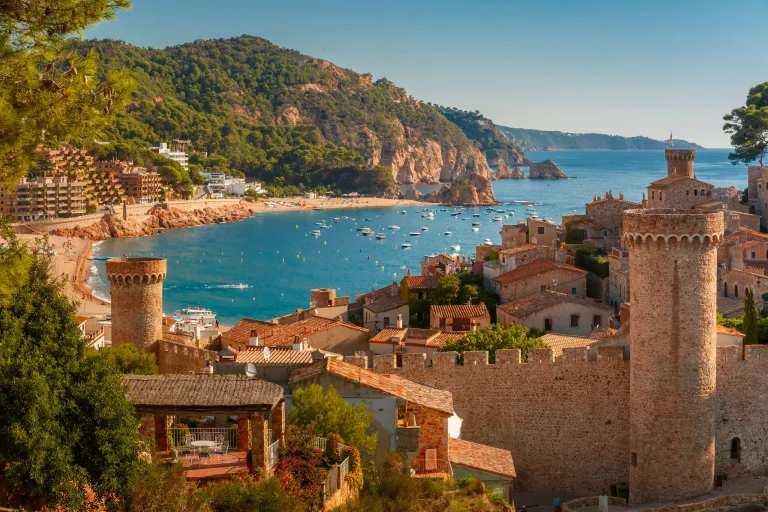Spain is one of the world’s leading tourist hotspots, attracting more than 80 million tourists annually. As significant as tourism is to the Spanish economy, however, it also takes a toll on local populations on a seasonal basis, especially at peak times of the year. Spain has introduced a seasonal tourist tax in certain regions as a measure, levying variable charges depending on the time of year in an effort to regulate tourism influxes and fund local infrastructure.
What Is a Tourist Tax?
A tourist tax is a tax imposed on visitors staying in hotels, vacation rentals, or other accommodations. It’s generally added to the bill per person, per night, and the funds are utilized for:
- Upkeep of public spaces
- Environmental conservation
- Local infrastructure improvements
- Cultural heritage promotion
In Spain, the activation of this tax and its seasonal application differ by region or autonomous community.
Where Is the Seasonal Tourist Tax Applied?
The Balearic Islands (Mallorca, Menorca, Ibiza, Formentera) are currently the most notable Spanish region to have seasonal differences in their tourist tax, but other regions like Catalonia and Valencia are looking into this.
Balearic Islands: An Example of Seasonal Adjustment
The Balearic Islands have been charging the “Sustainable Tourism Tax” (Impuesto del Turismo Sostenible) since 2016, which is charged per person, per night, and differs based on the time of year and type of accommodation.
1. Seasonal Pricing Model
High Season (May 1 – October 31):
- 4-star and 5-star hotels: €4 per night
- Vacation rentals: €4 per night
- Hostels, guesthouses: €2 per night
- Cruise ship passengers: €2 per night
Low Season (November 1 – April 30):
- The tax is reduced by 75%
- Example: A €4 tax is lowered to €1
This pricing structure disincentivizes over-tourism during the summer and encourages off-season travel, which is a more sustainable and balanced model of tourism.
2. Long-Stay Discounts
In order to continue to control overcrowding and incentivize longer stays:
- As of the 9th night, the tax is discounted by 50%, irrespective of season.
Use of Tax Revenues
Funds collected from seasonal tourist taxes are redistributed in local projects, such as:
- Improvement of waste and water treatment
- Beach upkeep and anti-erosion measures
- Rehabilitation of historical sites
- Biodiversity conservation initiatives
- Development of rural tourism and public transport improvement
This ensures that tourism brings direct returns to local communities and compensates for wear and tear from mass visitor numbers.
Catalonia and Valencia: Fixed but Flexible Models
While not strictly seasonal, Catalonia (Barcelona, Girona, Tarragona) and parts of Valencia (Alicante, Benidorm) have tourist taxes modeled on accommodation type and are looking to make seasonal adjustments in the future due to pressure from over tourism.
Why Spain Implements Seasonal Tourist Taxes
Spain’s seasonal tourism tax policy serves several purposes:
- Crowd Control: Higher charges during the high season encourage tourists to consider off-season visits.
- Environmental Protection: Helps manage the environmental effects of mass tourism.
- Local Investment: Generates funds to improve the quality of life for residents and the experience for tourists.
- Tourism Redistribution: Encourages tourists to visit during off-peak times and go to less congested regions.
Public Response
Public opinion regarding tourist taxes in Spain is ambivalent but evolving:
- It has the backing of numerous residents as a means to manage tourism responsibly.
- Some in the hospitality industry are worried that higher costs will frighten away travelers.
- Environmentalists and local government officials routinely call for the application of the seasonal model to more regions.
In the Future
There are ongoing discussions in a number of autonomous regions to introduce or adapt seasonal tourist taxes as concerns about sustainability intensify. As the globe struggles with the climate crisis, greater international mobility, and pressure on cities, Spain’s model can provide a template for other places struggling to balance economic growth with environmental and cultural preservation.
Spain’s dynamic tourist tax seasonality is all part of a greater, strategic effort to make tourism more balanced and sustainable. By adjusting fees based on seasonality, Spain is not only managing tourist flux, but also ensuring that the value of tourism is fairly shared while preserving its cities, coastlines, and communities for generations to come.







Leave a Comment